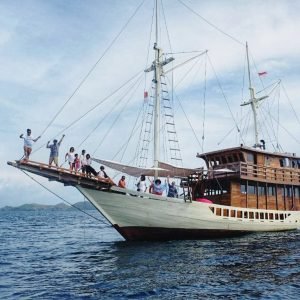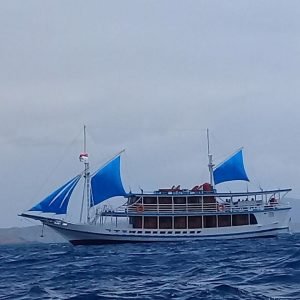Flores Island

The Discovery of Flores Island
Flores Island, part of East Nusa Tenggara, Indonesia, was first documented by Portuguese explorers in the early 16th century. The island’s name, “Flores,” meaning “flowers” in Portuguese, was given due to its lush landscapes and vibrant flora. The Portuguese arrived around 1512, led by António de Abreu and Francisco Serrão, during their spice trade expeditions. They established settlements and introduced Catholicism, which remains a dominant religion on the island today.
Before European arrival, Flores was already inhabited by various indigenous tribes with unique cultures, traditions, and languages. The island was part of the Majapahit Empire and later influenced by Makassarese and Bugis traders from Sulawesi.
The Meaning of Flores Island
The Portuguese name “Flores” contrasts with the island’s local heritage, as the indigenous people referred to their land by different names. The island is home to rich biodiversity, volcanic landscapes, and ancient cultural traditions, making it one of Indonesia’s most unique destinations. Flores is famous for its mystical Komodo dragons, pristine beaches, rugged mountains, and traditional villages.
Indigenous Tribes of Flores Island
Flores Island is culturally diverse, home to several ethnic groups, each with distinct traditions, languages, and customs. The major tribes on Flores include:
- Manggarai Tribe – Found in western Flores, this tribe is known for its unique spider web rice fields (Lingko) and traditional Caci whip-fighting dance.
- Ngada Tribe – Inhabiting the central region, they maintain megalithic traditions, and their villages, such as Bena and Wogo, feature ancient stone structures and traditional houses.
- Ende Tribe – Located near Mount Kelimutu, they are known for their cultural heritage and textiles, including the famous ikat weaving.
- Lio Tribe – Also found in Ende Regency, the Lio people are closely connected to spiritual rituals and the mystical Kelimutu crater lakes.
- Sikka Tribe – Situated in eastern Flores, they are recognized for their Catholic heritage, traditional dance, and intricate handwoven textiles.
- Lamaholot Tribe – Inhabiting the easternmost part of Flores and nearby islands, they are famous for their ancestral rituals and warrior culture.
Notable Attractions in Flores
Flores is not just rich in cultural heritage but also offers some of Indonesia’s most breathtaking natural wonders:
- Komodo National Park – Home to the legendary Komodo dragons and stunning marine biodiversity.
- Mount Kelimutu – A volcano featuring three color-changing crater lakes, considered sacred by the locals.
- Wae Rebo Village – A UNESCO-recognized traditional village high in the mountains.
- Bena Traditional Village – A well-preserved megalithic village showcasing Ngada tribal traditions.
- Riung 17 Islands Marine Park – A paradise for snorkeling and island hopping.
- Spider Web Rice Fields (Lingko) – A unique agricultural system representing Manggarai tribal customs.
- Blue Stone Beach – A stunning coastline covered in natural blue pebbles.
Conclusion
Flores Island, with its rich history, cultural diversity, and stunning landscapes, remains one of Indonesia’s most extraordinary travel destinations. From its discovery by Portuguese explorers to the preservation of indigenous traditions, the island continues to captivate visitors with its blend of history, adventure, and natural beauty. Whether exploring traditional villages, trekking volcanoes, or discovering Komodo dragons, Flores is a must-visit for history lovers, cultural explorers, and nature enthusiasts alike.



